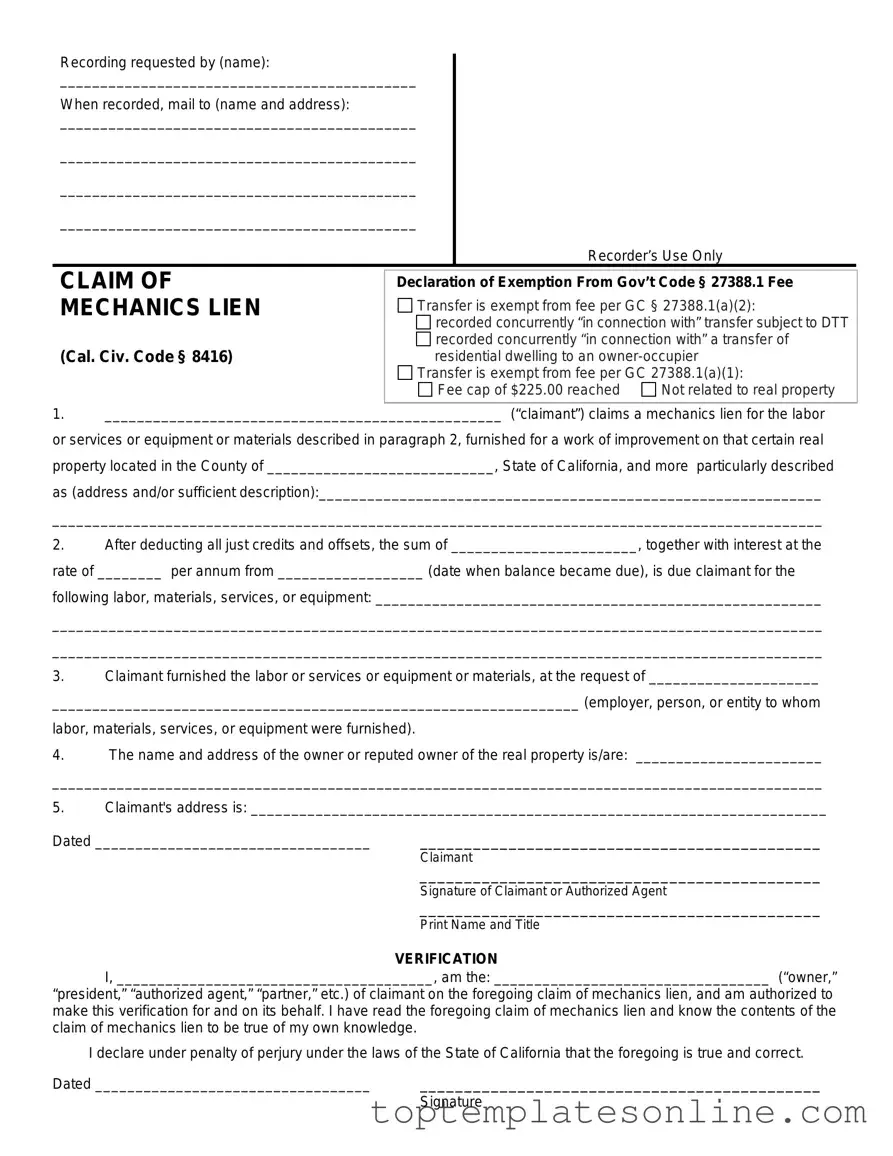The Mechanics Lien California form serves as a crucial tool for contractors, subcontractors, and suppliers seeking payment for services rendered or materials provided on a construction project. This legal document is designed to protect the rights of those who contribute labor or materials to improve a property but have not received compensation. By filing a mechanics lien, individuals can establish a claim against the property itself, which may lead to a legal remedy if payment is not made. The form requires specific information, including the property owner’s details, a description of the work performed, and the amount owed. Timeliness is key; the lien must be filed within a certain period after work completion or the last delivery of materials. Additionally, the form must be served to the property owner and recorded with the county recorder’s office to be enforceable. Understanding the nuances of this form is essential for anyone involved in construction or renovation projects in California, as it helps safeguard their financial interests and ensures that they receive fair compensation for their contributions.
